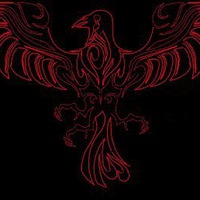
Какие бывают ереси ?? срочно
 0
0
 0
0
Ответы на вопрос
 Внимание! Ответы на вопросы дают живые люди. Они могут содержать ошибочную информацию, заблуждения, а также ответы могут быть сгенерированы нейросетями. Будьте внимательны. Если вы уверены, что ответ неверный, нажмите кнопку "Пожаловаться" под ответом.
Внимание! Ответы на вопросы дают живые люди. Они могут содержать ошибочную информацию, заблуждения, а также ответы могут быть сгенерированы нейросетями. Будьте внимательны. Если вы уверены, что ответ неверный, нажмите кнопку "Пожаловаться" под ответом.

 0
0
 0
0

Types of Heresies
Heresy refers to beliefs or teachings that deviate from the accepted doctrines of a particular religious or ideological system. There have been various heresies throughout history, each associated with different religious or philosophical movements. Here are some examples of notable heresies:
1. Arianism: Arianism was a heretical belief in early Christianity that denied the divinity of Jesus Christ. It was named after Arius, a priest from Alexandria, Egypt, who taught that Jesus was a created being and not equal to God the Father.
2. Gnosticism: Gnosticism was a religious movement that emerged in the early centuries of Christianity. It emphasized secret knowledge (gnosis) as the means to salvation and believed in a dualistic worldview, where the material world was seen as evil and the spiritual world as good.
3. Nestorianism: Nestorianism was a Christological heresy that arose in the 5th century. It taught that Jesus Christ existed as two separate persons, one human and one divine, rather than as a single person with two natures (human and divine) united in one.
4. Monophysitism: Monophysitism was a Christological heresy that emerged in the 5th century. It taught that Jesus Christ had only one nature, a divine nature, and that his human nature was absorbed or subsumed by the divine nature.
5. Manichaeism: Manichaeism was a dualistic religious movement founded by the prophet Mani in the 3rd century. It taught a cosmic struggle between the forces of light and darkness, with the material world seen as inherently evil.
6. Catharism: Catharism was a Christian heresy that emerged in the 12th century in Europe. It rejected the authority of the Catholic Church and believed in a dualistic worldview, similar to Gnosticism, where the material world was seen as evil and the spiritual world as good.
7. Albigensianism: Albigensianism was a heretical movement that emerged in the 12th century in southern France. It was closely related to Catharism and shared many of its beliefs, including the rejection of the material world and the authority of the Catholic Church.
8. Protestant Reformation: The Protestant Reformation in the 16th century led to the emergence of various heretical movements that challenged the authority and teachings of the Roman Catholic Church. These included Lutheranism, Calvinism, and Anabaptism, among others.
It is important to note that the classification of certain beliefs as heresies is subjective and depends on the perspective of the religious or ideological system in question. Different sources may provide additional examples or variations of heresies, but the ones mentioned above are some of the most well-known and influential throughout history.
 0
0
 0
0
Топ вопросов за вчера в категории История
Последние заданные вопросы в категории История
-
Математика
-
Литература
-
Алгебра
-
Русский язык
-
Геометрия
-
Английский язык
-
Химия
-
Физика
-
Биология
-
Другие предметы
-
История
-
Обществознание
-
Окружающий мир
-
География
-
Українська мова
-
Информатика
-
Українська література
-
Қазақ тiлi
-
Экономика
-
Музыка
-
Право
-
Беларуская мова
-
Французский язык
-
Немецкий язык
-
МХК
-
ОБЖ
-
Психология
-
Физкультура и спорт
-
Астрономия
-
Кыргыз тили
-
Оʻzbek tili





















